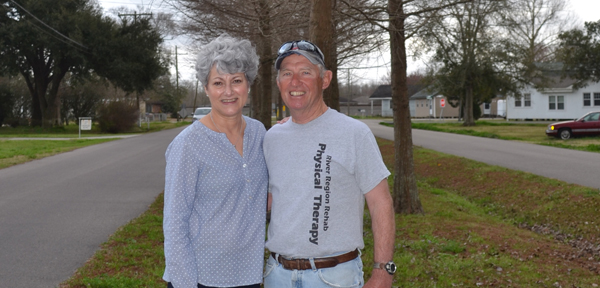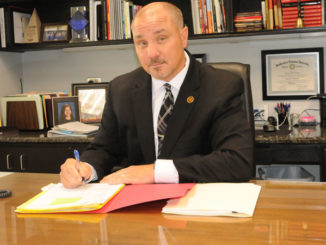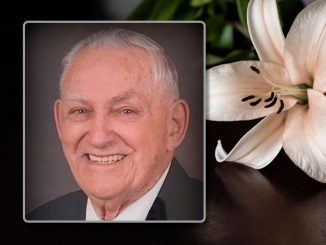
Over the past six years, a local couple has been transplanting saplings into the neutral ground of their Luling street and using fish remains to make the trees grow healthy and tall.
Charlie Bush and his wife Jerri, both 68, built a new home on St. Charles Boulevard in Luling after their home of 40 years in Metairie was flooded during Hurricane Katrina. Since moving to the area they have been slowly filling in their landscaping.
Charlie said the idea of fertilizing trees with fish remains just seemed like common sense.
“My wife and I are pretty eco-conscious. We recycle everything,” he said. “With fish, you cannot over-fertilize – you can put and put and put. People told me the Indians used to do that when they planted their corn. They put down a fish head and put their corn on top of it. It is just a natural organic fertilizer.”
Charlie is a former auto mechanic who co-owned PM Automotive on Shrewsbury Road in Jefferson. After retiring and selling his part of the business, he now works three days a week as a custodian at St. Charles Borromeo School in Destrehan. As a part-time worker, Charlie has plenty of time to go fishing, which allows him to procure a lot of fertilizer for his trees.
About once a week, Charlie digs holes at the edge of his trees’ root systems and deposits the fish remains.
“I cut the soil in a circle, go down about two feet and put the fish heads in. Then I cover it back up and plant it down. That way no varmints or anything else will get to it,” he said. “The roots grab that and they just go crazy on it. It is like giving them steroids.”
The results of the Bushs’ fertilizing can seen on the neutral ground in front of their home where they first planted a set of cypress trees six years ago.
Charlie said he had heard that cypress trees are known for their slow growth and he set out to prove his fertilization methods worked.
“I said, ‘you know what, I am going to prove everybody wrong,’” he said.
The tops of those trees now reach about 40 feet above the avenue. For skeptics, Charlie points to the smallest cypress tree on the neutral ground that he has kept as an experiment control by not fertilizing it with the fish remains.
The tree is much smaller than those that surround it.
“This is the only tree I did not fertilize,” he said. “I always tell people, ‘if you don’t think fish work, take a look at that last tree.’ Every one of them was planted at the same time. Isn’t that crazy or what?”
By planting the trees on the neutral ground, the couple is beautifying the entire neighborhood and providing landscaping that will survive future generations.
“I am not going to see this tree get that tall, but somebody is going to enjoy it and the shade it provides for the house,” Charlie said.
In addition to the neutral ground, the couple has also planted another line of trees running along the northern border of their home.
By covering two sides of the home, Charlie said the trees serve as a barrier to both wind and sunlight and cut down on energy costs.
“It’s going to cut down your energy bill tremendously. My energy bill, believe it or not, I guarantee you is less than most people around here because of those trees,” Charlie said.
The couple gets their trees every year when the German Coast Farmers’ Market holds a tree giveaway. The giveaway provides local residents with different tree varieties each year.
Marilyn Richoux, president of the German Cost Farmers’ Market board, oversees the annual tree giveaway program.
“It is an assortment of native trees. They are developed and grown at the LSU AgCenter. We actually purchase them and give them away,” she said.
Richoux said she is happy to see someone putting the annual tree giveaway program to good use in such a community-oriented manner.
“They are doing a lot to help green up St. Charles Parish,” Richoux said. “It is very gratifying to me to see the program is so successful.”




Be the first to comment